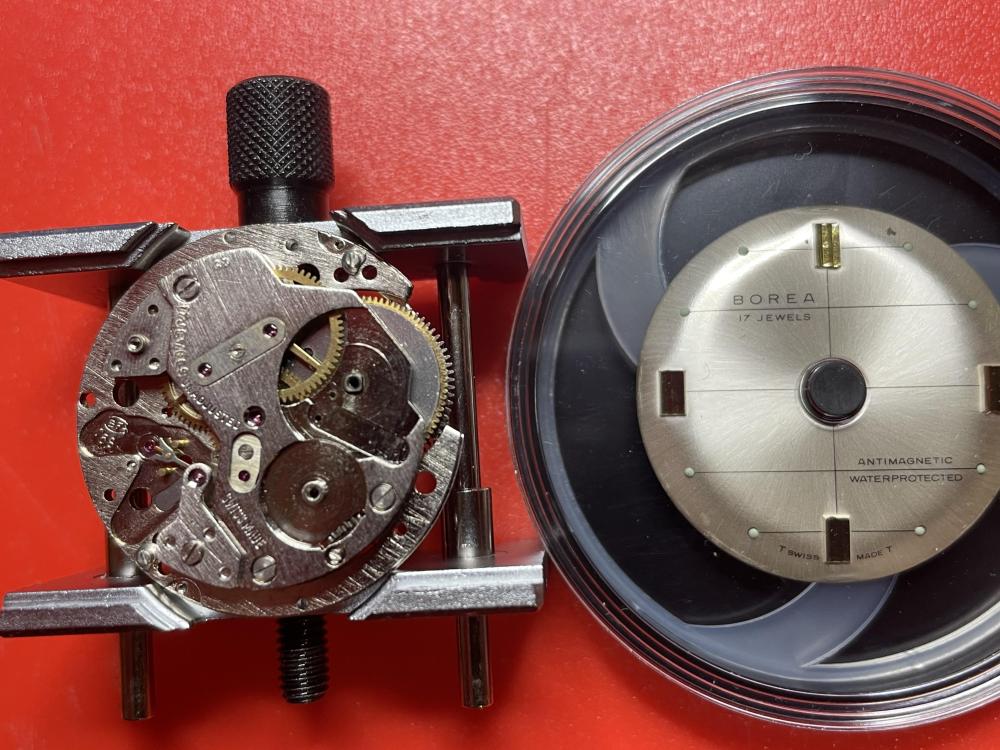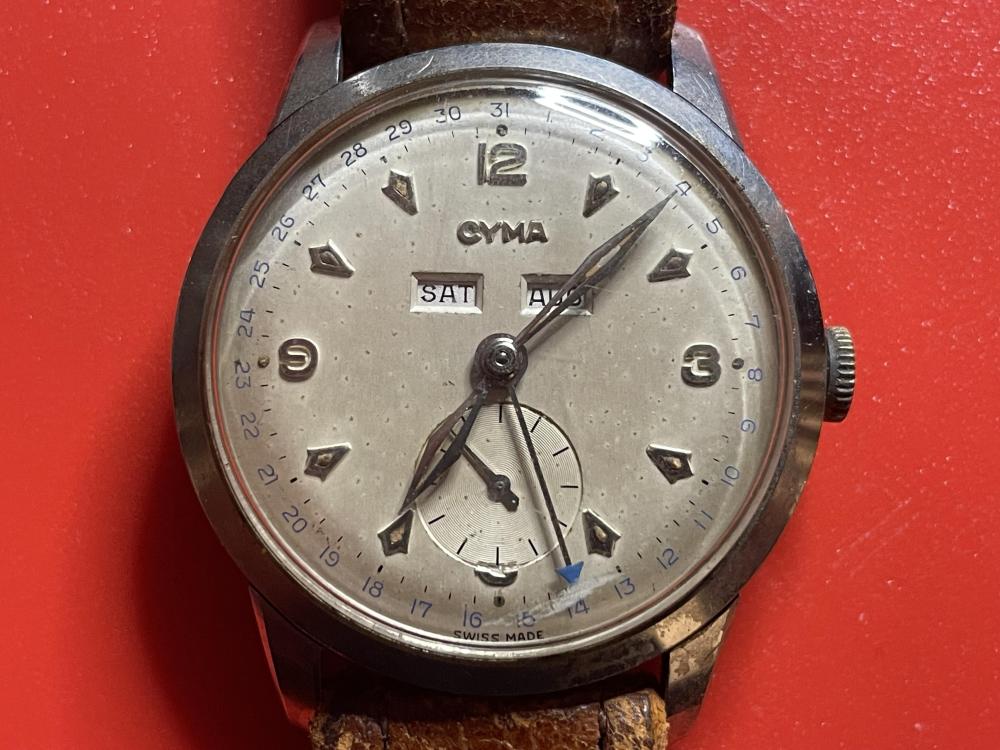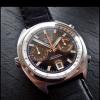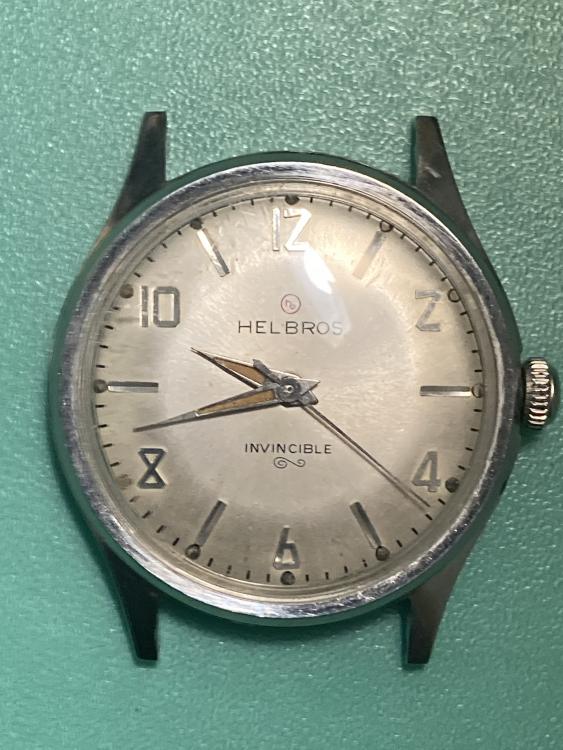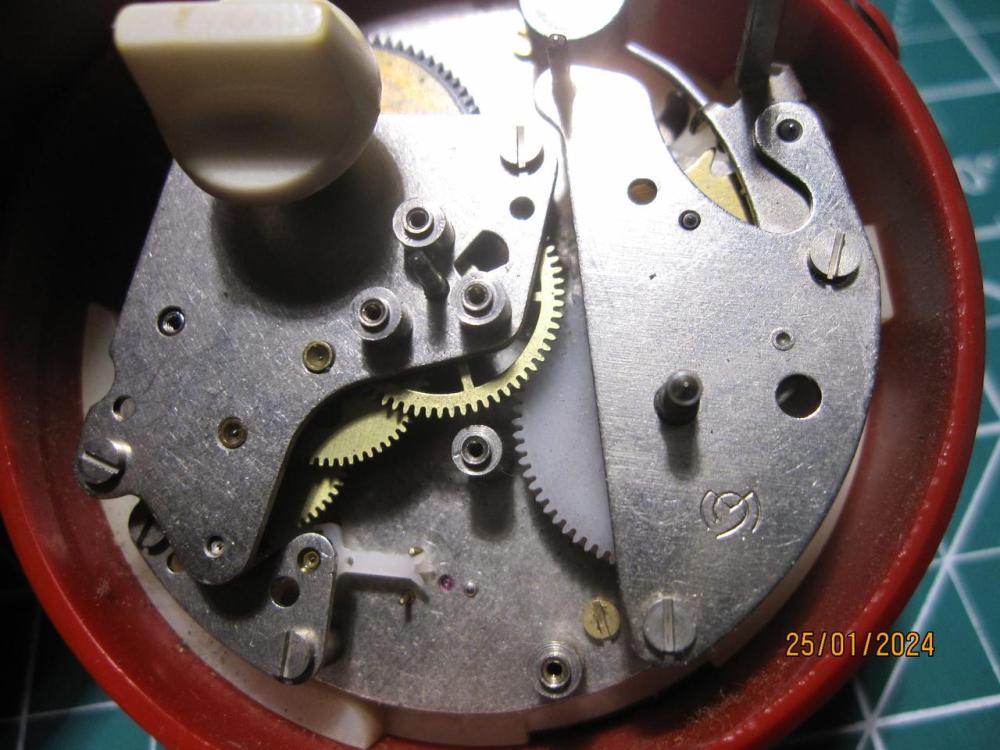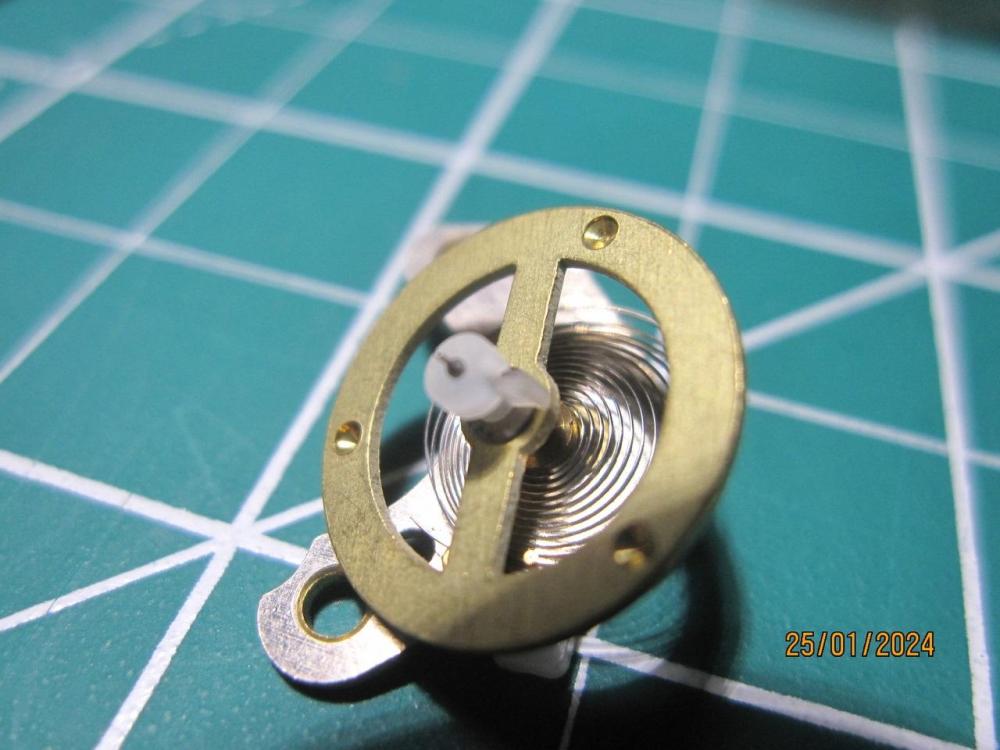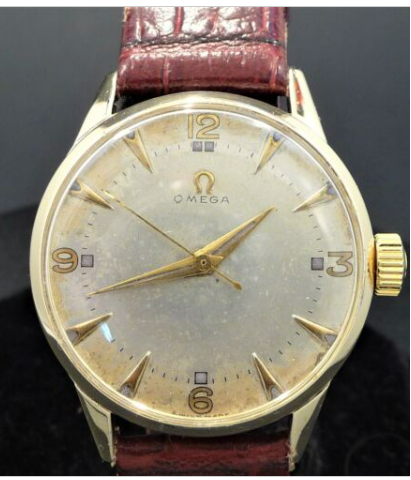Search the Community
Showing results for 'Radium'.
-
As long as you don't grind the stuff up and blow it around, you should be fine. Use a dust mask if in doubt. The things I'm very careful of are: Radium lume - even the stuff that is visually completely dead and inert is still highly radioactive; it's the fluorescent part that decays, not the radium. A single speck inhaled or ingested can cause cancer, so store parts in zip bags and wear a dust mask & wipe your work area down after handling anything that uses it. A proper geiger counter is a good investment if you plan on working with vintage watches, so you can check for it & take appropriate precautions. "One dip" & equivalents - the original type & the generic PERC dry cleaning fluid (Tetrachloroethylene / perchloroethylene) which is what the original one dip was mostly made of. That's toxic, a known carcinogen. Use in very good ventilation only & keep it sealed whenever possible. The newer B-Dip is presumably a safer replacement.
-
Hi Bob, Welcome to the forum and thank you for your service. I would never try to discourage you from getting into this wonderful hobby/profession, but please be aware, it does not cost just a few dollars to get into watch repair. Tools are expensive and in many instances the cheap knockoffs are worthless, especially when learning. You can get the tools needed to disassemble, clean, inspect, reassemble and lubricate a watch without spending thousands, but as soon as you start getting into task-specific tools, there are so many and they don’t come cheap. My suggestion is to start with the basics required to disassemble, clean, inspect, reassemble and lubricate only, and build upon that gradually as the need for other tools arises. The advice above regarding starting out on working movements is gold. Many of the non-running watches on eBay have been bought, tinkered with, deemed too difficult and then sold again, often with more damage done each time. Without experience, you clean and service a non-runner and it still doesn’t run. What now? Troubleshooting is difficult as a beginner. This can become very frustrating. I would encourage you to buy a working movement, and learn to strip and service it. If it isn’t running afterwards, you know it’s down to you, and as long as you didn’t damage anything you know that the parts you’ve got can form a ticking watch. An excellent movement to start with is the ETA 6497 clones from China, such as the ST36. They’re not expensive, and although it finds use in some larger wristwatches, this movement was originally designed for use in pocket watches, so everything is larger and easier to see and handle. Once you can service a new ST36 and have it running better than it did when it arrived, you’re definitely ready to step up to working vintage watches and then think about repair of non running or poorly running watches. As far as cleaning solutions go, you will not do better than the commercial watch cleaning and rinsing solutions that are available. You’ll find plenty of suggestions for home brew cleaners online, but the professional products are superior and you want to give yourself every advantage you can, especially when you start working on vintage movements containing hardened decomposed lubricants and often years worth of other dirt and dust. Alcohol is ok for cleaning or rinsing movement parts that don’t contain any shellac. The pallet fork and roller table contain jewels secured with shellac and will tolerate a rinse in alcohol but not prolonged exposure. Methanol dissolves shellac faster than ethanol, and isopropyl alcohol dissolves shellac slower than ethanol. Just in case you don’t know already, the radium on the dial (and likely the hands) of your Dad’s Elgin is highly radioactive. It is safe enough when safely contained within the watch case, but the moment you open the watch and especially when handling the dial or hands you must take precautions against inhaling or ingesting any radium. Best Regards, Mark
-
I was directed to introduce myself< > Bob Smith, veteran, retired, still ticking. After I started training in emergency medicine it became clear I needed a good time piece (checking pulses, or respirations, or tourniquet times etc.) I wanted one like my fathers trench Elgin with the radium dial, but that dial has faded badly since the 50s so I looked on Ebay. There are a lot of interesting and affordable vintage (mechanical) watches and while Rolex is a little expensive the second best watch , Elgin, is quite available, especially if you're a beginner collector and don't mind lady watches. It's disturbing that they call the new watches "vintage", those new battery operated jobs. Getting my fathers Elgin restored looks like $150 to start but becoming a 'watch smith' costs just a few dollars (without ultrasonic cleaning tank). I just started collecting and know nothing but willing to learn. ( I hope I find an affordable way to get dad's Elgin back to it's radiant radium glory) (I'd appreciate any advice on cleaning antique watches (I guess alcohol isn't recommended) (or how to tell what movements are best (I have a 555 coming).)
-
Well, I'll need to wait for a replacement hairspring. I completely butchered attempting to fix it. Dropping it doesn't help. I did learn that I need more than just a monocle for magnification and that entry level tweezers are not acceptable for this level of repair. Still, I guess it's important to find your limits early, and I did learn about Breguet coils, so thanks everyone for chiming in! @nevenbekriev thanks for the advice on radium, I just flashed a UV light on them and they glowed for about a second and that's it. I thought radium glowed for like 1600 years? Am I way off base there? Next updates once I get the replacement spring and get it back on the balance.
-
Hi, a friend has just left these with me to see if I can get them going; they were his Father's and they have sentimental value. He apparently tried to get them serviced a few years ago and was told they were too old. (No idea where he tried). The first one is a Borea, which I've started disassembling. The movement has a number BF158 - searching for that brought me back to this site! An entry in the 404 Club topic for a Shelton watch. This one has the same basic movement, but in a 17 jewel version - though still with a pin pallet ?? This looks to be generally OK, just gummed up with old lubricants. It's in a well worn and tarnished gold plated brass case. The other is really strange; a Cyma, what seems to be a "Cymaflex triple date" from what @ve found on google? There are two flush pushers in the side, presumably for date setting? This one had radium lume, and it's giving the highest count of any watch I've ever had; near enough one millirad per hour at the crystal. The speckles on the dial appear to be lume particles, as the hands don't have much left in place... I'm not really sure how to safely proceed with this one, to avoid contaminating anything? It does have a separate bezel with a knife groove. It tries to run with a gentle rotation, but only 10 - 15 seconds at a go.
-
I take it that you're comment re the Unicorn is 'tongue-in-cheek'? Would any of the watches that are on the link I posted be likely to be radium watches? What period was that prevalent in and when did the practice stop?
-
Looks like it is only dirt. If rust, then this means the strenght of the spring is reduced in places with rust, so the spring is damaged and useless. Only light surface rust, which is rather residual from other places activity of rust can be cleaned, and no chemicals that can etch the metals of the spring aloy should be used Be aware that this usually happens when the dial/hands have radium lume! One of the pivot looks little bent. Not that much to prevent the movement from working, but may be amplitude will be a little bit smaller when this pivot down, resing on the cap stone. Bent pivots always means the balance is out of poise, but it depends on the severity of the bent. Yes it can be straightened, but at this point I will advice to leave it as is and check how the movement performs.
-

Identifying watch for possible radioactive concern
rjenkinsgb replied to kr2's topic in Identify This Movement or Watch
Definitely worthwhile, if you are working with old watches - just be sure it's an actual Geiger counter, not one of the vast range of scam/fake "Radiation detectors" on ebay & amazon etc. that detect RF or static electricity... In the mean time, I'd put the dial and hands in zip bags & wipe down the work area with a damp cloth to pick up any dust, then discard the cloth. The emitted radiation from radium lume is not normally harmful - but inhaling or ingesting a single particle of the material can cause serious long term harm, so do take care with it. -
Identifying watch for possible radioactive concern
Geotex replied to kr2's topic in Identify This Movement or Watch
Sometimes you can see a burn mark on the dial from hands that have stayed in one place for decades, which is a clincher, but I don't really see that here. An inexpensive detector could let you know for sure, but considering the dial/hand style and the darkened condition of the dots on the dial in the absence of any clear water damage, I'd give 90% likelihood that there is radium there. Tritium is usually marked out on the dial, and although it moves to yellow and tan as it ages, it doesn't get as "toasty" as those dial spots based on what I've seen. -
I Have a doubt on a vintage watch I want to service. It's an old cronographe suisse I think from the 50's. Does it have in your opinion a radium dial?
-
always interesting every time we discussed radium. I was at a lecture on Saturday morning the subject was refinishing hands. Eventually I got to radioactive hands like tritium and of course radium. Amusingly they were commenting where the radiation usually doesn't go through the movement except it depends on how hot the radium is and how thick the movement is but the general feeling was that the radium wasn't a problem except of course the radon gas. Plus the recommendation was ideally a bunch of equipment you don't half copper facemasks etc. etc. Then a course is a problem of that also came up in the lecture of any time you restore the hand and/or dial even if you think it will make it somehow better you may find out that down the road if you were to sell the watch the diehard collectors will be very unhappy if it's not original including with its radio. I've heard stories of people buying Rolex watches will bring a Geiger counter with the verify that the dial has the proper amount of radium and it hasn't been played with. then looking at your pictures as far as radium damage goes it doesn't look bad at all. The yes if the radium is super strong I've seen pictures and we have a sample at work where it will burn the plastic crystal action transit blog from the radium and you can also burn the dial where the hands once for. So give a light color dial the radium hands stay above it in the move the hands you can oftentimes get a radium burnt affect. The same things happens with brand-new radium hands that are on a paper sheet if you move the hand you can see the paper underneath his discolored from the radium. The biggest problem I see with your watch is is that rust I see in the center? Looks like rust I don't see it in the movement but if that's rust that would be very very bad then as you are seeking information notice the three letters on the balance bridge? those are a US import code for tax and duty purposes that existed at one time. It's how the American companies can stay competitive by not allowing inexpensive imports in the country. Basically the taxes would raise the price up so the watches were all expensive. So if you look at the link the first entry is this AOC Heuer, Mido, Roamer (Meyer & Stüdeli) http://www.ranfft.de/uhr/info-uscode-e.html
-
Strange stuff
JohnR725 replied to Waggy's topic in What is this tool? How do I use it? Tools Identification
You probably don't really want the radiation detector. Ill just cause undue stress especially if you start acquiring a vintage stuff. Somewhere but it's hiding in the attic I believe in a metal box I have an actual kit for reapplying your radium luminescence material. But then I also have some of the wax stuff that they used to sell. used to have is really little tiny tins that had wax with the luminescence material dissolved in seed heated up and put it underneath the hand in to fill in the hand and that's what the Steelers. I was never really impressed with it. But I discovered with my Geiger counter that some of the ones I have actually have radium in their which has really surprised about because but the radium was supposed to be phased out by? On the other hand I have a whole bunch of cards that have radium hands even without the Geiger counter you can tell because if you push the hand decide you can see the burnt paper from the radium. So do I get really excited to get some military hands are dials then you monitor gets very excited Here's what the powder we think it is it's available from cousins https://www.cousinsuk.com/product/diamantine-bergeon -
I believe Iv worked on at least 2 watches with radium on the dials. Both times I hadnt taken the proper precautions when working on radium watches, as I hadnt known any better. Am I in danger? This picture is a watch I worked on recently. And I cannot tell if its radium or really old tritium. The hand glow for less than a second under a black light.
-
Should I be worried about radium?
Darthkram replied to danizzz's topic in Chat About Watches & The Industry Here
A bit of an anecdote but might be helpful for some real life dealings with radium. A few months ago I acquired a moderate stash of mixed parts off Facebook Marketplace. Some of what was in the stash was around 50 small tins of old watch hands with each tin containing maybe 20-30 hands. All of which were rusty and absolutely coated in flaking radium! Needless to say I wanted rid of them, I double bagged everything and stored it in the garage and managed to find a relevant government email address and fired off an email. I got a response from someone who turned out to be the IAEA representative for our country and lived in my city so he offered to come around to check them out. He ended up taking them away and disposing of them for me but while he was visiting he also offered to scan my work desk and any other areas I used which I gladly accepted. He found no trace of radium on my desk where I do all my assembly. The only suggestion he had was to move the radioactive watches I own out to the garage and open them out there as my workbench is near the kitchen and he had concerns with potentially getting radium on food. The takeaway I had from his visit was that the precautions I take when working on radium watches must be at least semi-acceptable. I put down paper towels before opening any radium coated watch and put on a mask. Once I've opened and removed the dial and hands and placed them in a zip lock bag I carefully fold the paper and throw it away. I then wipe down my desk with more damp towels and wipe down any screwdrivers/tweezers I use and also wash my hands well before starting on the actual movement. -

1916 trench half hunter VERY radiumed
mikepilk replied to AlecMac's topic in Identify This Movement or Watch
I use the N95 masks I bought in lockdown. I cover the desk in clingfilm to prevent contamination, and wear latex gloves (maybe not necessary). I remove the radium with cotton wool buds and warm water. Everything I use which comes in to possible contact with radium, I seal in plastic bags and put in the household waste. The small amount of cleaning water, I soak in to kitchen paper and bag. I think it's OK to tip in down the drain (here in the UK). There are plenty of opinions on just how dangerous radium is. The bottom line is you don't want it in your body. Taking the above steps is not difficult and should prevent a chance of ingestion of particles. Once under water, there's no chance of inhaling particles. With some 'historic' watches some people prefer to leave the radium intact for authenticity. Painting a clear lacquer (nail varnish) over the radium will prevent particles flaking off. I have a 1940s Universal Geneve with a radium dial where it's not easy to remove the radium, and it looks better left original. I keep it sealed in plastic bag to (hopefully) keep the radon gas in. Out of interest, do you have a reading in of the radiation count? -
The natural lume is seen on the dial and it has green color. It doesn't seem to have radium, also they stopped using radium in the 50's and this clock is made later. Do the dots on the dial still shine for some time in the dark right after ehposed to bright light? Good work with the hands! The factory existed untill mid 90's and then was closed. In the 80's they started to put plastic wheels under dial and plastic barrel for the alarm spring. When the factory was closed, the movement looked like this and only 2 jewejs left from 11 in the original
-
see what happens if I don't pay attention 100% at lectures I can't answer your question. so yesterday's lecture one of things he did talk about was and I didn't pay attention 100% was how the tell the difference between radium, tritium and basically everything else. One of the ways is with UV light things like the modern stuff will Floris incredibly well. The reason I didn't pay attention hundred percent was because I have a Geiger counter so I can tell with radioactive. Then basically the feeling at the lecture was it's not an issue we've had multiple discussions about it on the group there some people become extremely panicky and others it just don't give a darn as long as you don't go poking at it you'll be fine but even in the lecture he talked about actually restoring tritium hands for instance by taking some other hands taking the material mixing it up again and using it wearing nice facemasks goggles not reusing the tools etc. etc. but when it came to radium he wasn't really in favor of any of its. On the other hand they once made radium and refinishing kits because I actually have one lurking someplace it was in the material house ones that I thought it was quite amusing I believe I banished it someplace out of the way. if you don't have a Geiger counter one of the ways that you can tell is you put the watch in a dark box basically for 24 hours of not sure the exact time apparently the modern luminescent materials when charged up glow for quite a number of hours don't get very faint and the bill still glow city seal something up in a black box no light exposure 24 hours be safe then go into a black room allow your eyes to adjust depending on how long that takes and look at the hands of their still glowing or the dial apparently the radium itself will glow blue from my quick googling of how to tell if I have radio. His sockeye cause the zinc something to floor S because long ago that's been burnt to crisps by the radiation but apparently the radium actually does glow. Otherwise their cheap geiger counters on Amazon US have be careful a lot of them are not of the right type and are not sensitive enough maybe before you run out via Geiger counter look at this YouTube channel. He goes looking for radiation and antique stores or a prime place to find it and it isn't just the radium watches is looking for. One of my friends based on this went and bought a Geiger counter discovery sure enough some of the stuff in his house has ceramic with radiation. I think the only radiation I have each the radium hands which is a set of were banished someplace else in the house where don't have to worry about them. https://www.youtube.com/@RadioactiveDrew
-

Should I be worried about radium?
mikepilk replied to danizzz's topic in Chat About Watches & The Industry Here
Same problem here in the UK - who do you contact? I don't know about the USA, but in the UK I understand it's OK to dispose of a radium watch in the household waste. But not a whole lot at once. Though I've no idea where you would take them. When removing the radium, I seal everything in zip lock backs and put in the household rubbish bin. It hasn't set off any alarms yet! I guess the question is - is it OK to put a radium watch in the trash can. If so, it must be OK to put the radium (in a sealed container/bag) in also? -
-

Should I be worried about radium?
LittleWatchShop replied to danizzz's topic in Chat About Watches & The Industry Here
That was my anecdotal evidence. Give me yours. Evidence of one watchmaker who died from radium induced bone cancer. This radium fear has been overly hyped. I like acronyms. To minimize Risk/Reward, we can either reduce risk, or increase reward. For horological radium (let's call it HR), there is some unknown risk that cannot be quantified nor agreed upon. But whatever it is, give it a value and fix it. Then ask yourself about the reward. Except in rare cases, probably not much. Back to ALARP...reminds me of the Alar scare. Life is full of risks and rewards. You place your bet and spins the wheel! -

Should I be worried about radium?
Waggy replied to danizzz's topic in Chat About Watches & The Industry Here
I think we need to put things into perspective, we can't treat the watch like its some kind of death machine when we are working on it and then as something benign after that and wear it day-to-day on our wrist, a good example of cognitive dissonance. I know that the body of the watch will block the alpha radiation which is the main concern, but the radiation detectors don't pick up alpha, so it is definitely throwing off other types of radiation too, otherwise our detectors would be useless. I typically get the hands off as soon as I can and dunk them in a benzine jar with acetone, for PPE I use finger cots. I then dispose of the cots and (contaminated) acetone, I give the watch body (including the dial) a few puffs of air outside on my balcony to remove any free radium dust. Hence, the only remaining radium will be on the numbering on the dial, but this is usually a lot less free to flake or become something you can pick up on your fingers or breath in as it is glued in place and it can only become free if you start messing with it. After the above I treat the watch like any other. The extremes some people go to reminds me of a conversation I had in the late 90's or early 2000's when a friend of mine said he would never use a cell phone as it gave you brain cancer, the irony was that he was smoking while he was telling me this. So, it's all about quantifying risk, get a radiation detector and take reasonable precautions to massively reduce the already minuscule risk without overdoing it. I don't think there are any data to support a conclusion that watchmakers are at a statistically significant increased risk of radiation related ailments than those that are not exposed to the risk of radium, but, of course, absence of evidence is not evidence of absence, thus my reasonable precautions above. -

Should I be worried about radium?
AndyHull replied to danizzz's topic in Chat About Watches & The Industry Here
The problem will only become apparent when around 3,200 people in your local council have availed themselves of the "Disposal of Luminised Article" law, and someone starts finding small pieces of rusty 1950s radium alarm clock dials and sundry other mildly radioactive crap in the local landfill or raised levels of "interesting isotopes" in the ground water during routine monitoring and hits the panic button. Either way, I suspect it might be simpler to say. Send your mildly radioactive crap to a registered disposal site and save us all the trouble of having to clean up the local river, might be a slightly less risky law than the "a big boy did it and ran away" approach we currently have. After all, what exactly qualifies as a luminised article? A watch hand? A time expired 2 gallon drum of radium lume found in grandad's shed? 3,200 Timex radium watch hands that turn up on ebay? The law as it stands does seem a little wish washy.




